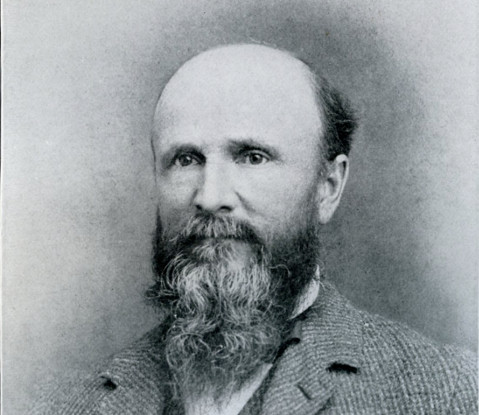The Founding of Lompoc
A Dry Town Named after 'Lake'

In the fall of 1874, the Lompoc Valley Land Company, a joint stock company formed under the auspices of the California Immigrant Union, founded the town of Lompoc. The prime mover behind this enterprise was a transplanted New Yorker named W. W. Broughton.
Broughton, lawyer and journalist, arrived in California in 1859. A teetotaler, Broughton had dreams of beginning a liquor-free community. Broughton headed a small committee to seek out a suitable site and settled upon the Lompoc Valley.
The derivation of the name “Lompoc” is a little unclear. Most likely, it is a form of a Chumash word meaning “lake.” During the Mexican era, the valley formed part of two land grant ranchos, Lompoc and Mision Vieja de la Purísima. In 1863, a partnership consisting of brothers William Welles (W. W.) and Hubbard Hollister, brothers Albert and Thomas Dibblee, and Joseph Cooper purchased the two ranchos.
Broughton met W. W. Hollister in 1870 and interested him in the idea of a temperance colony. The temperance movement was gaining momentum throughout California in the 1870s. In 1874, the state legislature passed a local option law that allowed communities to decide whether they would be wet or dry. Although the law was soon declared unconstitutional, its passage was testimony to the interest this issue engendered in the public.
In September 1874, the Lompoc Valley Land Company purchased the two ranchos. As plans went forward to parcel out and sell the acreage, each deed contained this proviso, “No vinous, malt, spirituous, or other intoxicating liquors shall ever be manufactured or sold upon any portion of the Lompoc and Mission Vieja Ranchos purchased by this corporation … ” An exception was made for spirits used for medicinal purposes.
Some 250 people came to the first sale of land on November 9, 1874. The auctioneer, trailing a red flag, would dash from one tract to another, followed by the crowd of anxious would-be buyers. By day’s end about $700,000 had changed hands. A square mile of choice land was set aside for the site of the new town of Lompoc.
By the end of the year, more than 50 buildings dotted the valley and a newspaper, the Lompoc Record, was in operation, edited by Broughton. By the spring of 1875, the town boasted a school and a post office, and by the first anniversary of that first land sale, the colony was home to some 200 families.
The general consensus was that there was enough river and well water to support a town of 25,000, but a drought in 1877 almost brought the new city to its knees. One early settler later recalled feeding her horse her straw mattress to keep the beast alive.
Keeping Lompoc liquor-free proved no easy task, for there were always those who wanted their liquid refreshment. In August 1875, a group of ax-wielding women barged into a drugstore that was surreptitiously selling liquor and smashed every alcohol container they could find. In 1881 another establishment was blown up by persons unknown. Two years later a vigilante group used ropes to pull down a building in which liquor sales were taking place. The drys were fighting a losing battle, however, and by the early 1900s, the dream of a temperance colony had gone glimmering.
Michael Redmon, director of research at the Santa Barbara Historical Museum, will answer your questions about Santa Barbara’s history. Write him c/o The Santa Barbara Independent, 12 East Figueroa Street, Santa Barbara, CA 93101.



